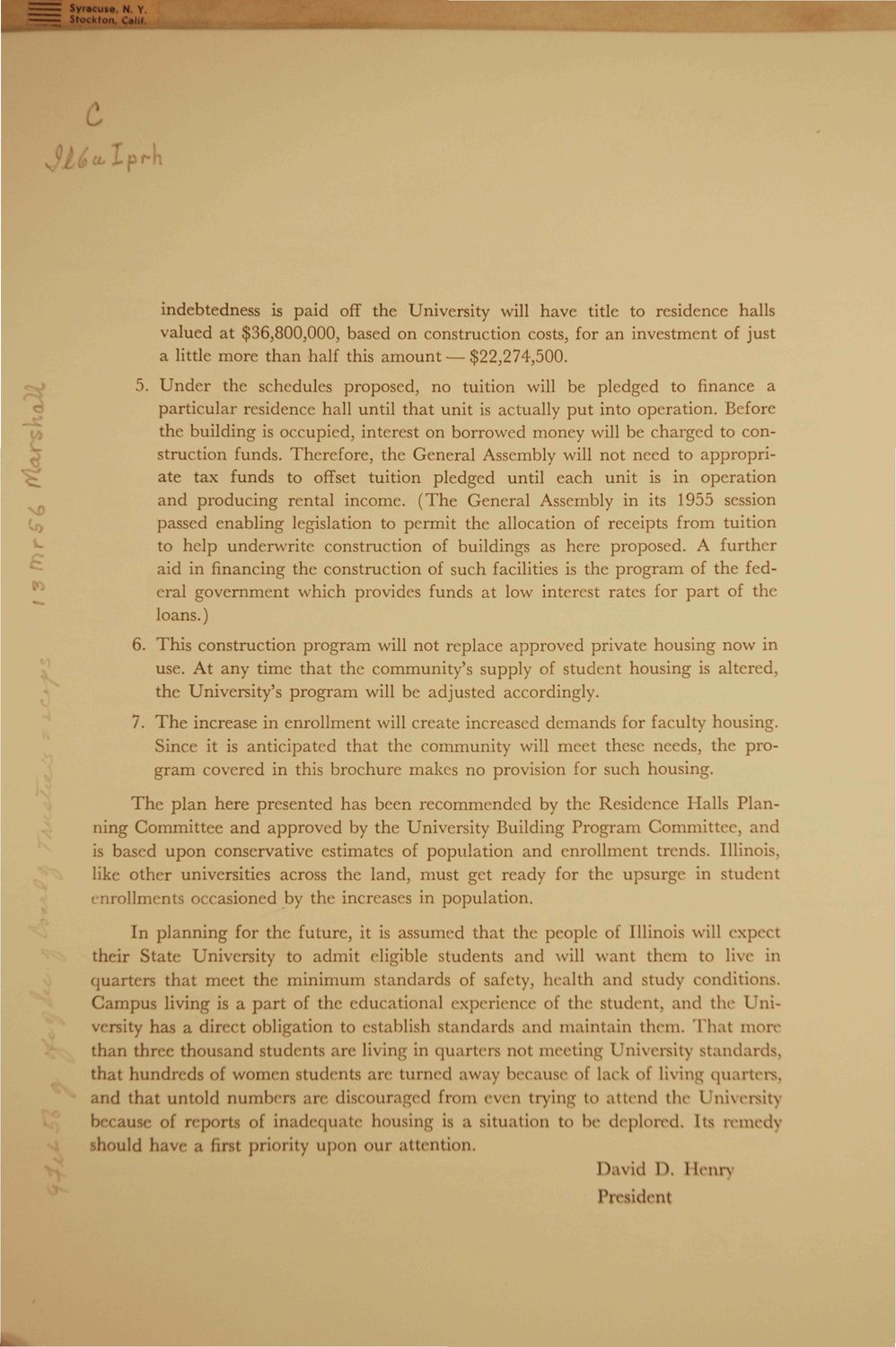| |
| |
Caption: Booklet - Future of Student Housing (1956)
This is a reduced-resolution page image for fast online browsing.

EXTRACTED TEXT FROM PAGE:
Syracuse, N. Y. \ pr-h indebtedness is paid off the University will have title to residence halls valued at $36,800,000, based on construction costs, for an investment of just a little more than half this amount — $22,274,500. 5. Under the schedules proposed, no tuition will be pledged to finance a particular residence hall until that unit is actually put into operation. Before the building is occupied, interest on borrowed money will be charged to construction funds. Therefore, the General Assembly will not need to appropriate tax funds to offset tuition pledged until each unit is in operation and producing rental income. (The General Assembly in its 1955 session passed enabling legislation to permit the allocation of receipts from tuition to help underwrite construction of buildings as here proposed. A further aid in financing the construction of such facilities is the program of the federal government which provides funds at low interest rates for part of the loans.) 6. This construction program will not replace approved private housing now in use. At any time that the community's supply of student housing is altered, the University's program will be adjusted accordingly. 7. T h e increase in enrollment will create increased demands for faculty housing. Since it is anticipated that the community will meet these needs, the program covered in this brochure makes no provision for such housing. T h e plan here presented has been recommended by the Residence Halls Planning Committee and approved by the University Building Program Committee, and is based upon conservative estimates of population and enrollment trends. Illinois, like other universities across the land, must get ready for the upsurge in student enrollments occasioned by the increases in population. In planning for the future, it is assumed that the people of Illinois will expect their State University to admit eligible students and will want them to live in quarters that meet the minimum standards of safety, health and study conditions. Campus living is a part of the educational experience of the student, and the University has a direct obligation to establish standards and maintain them. T h a t more than three thousand students are living in quarters not meeting University standards. that hundreds of women students are turned away because of lack o( living quarters, t> Vi> ^ and that untold numbers are discouraged from even trying to attend the University because of reports of inadequate housing is a situation to be deplored. Its remedy should have a first priority upon our attention. David D, Henry President
| |